
For this week’s Travel Tuesday Interview, I chat with one of my best friends, Becky Gillespie, a Cincinnati, Ohio native who has been living in Japan for 12 years. I met Becky in Laos a month before my Japan trip, and she invited me to stay with her in Tokyo. She dishes all the details about Japan including budget travel in Japan, how to find a job and the best off-the-beaten path destinations. No one knows Japan better than Tokyo Becky!
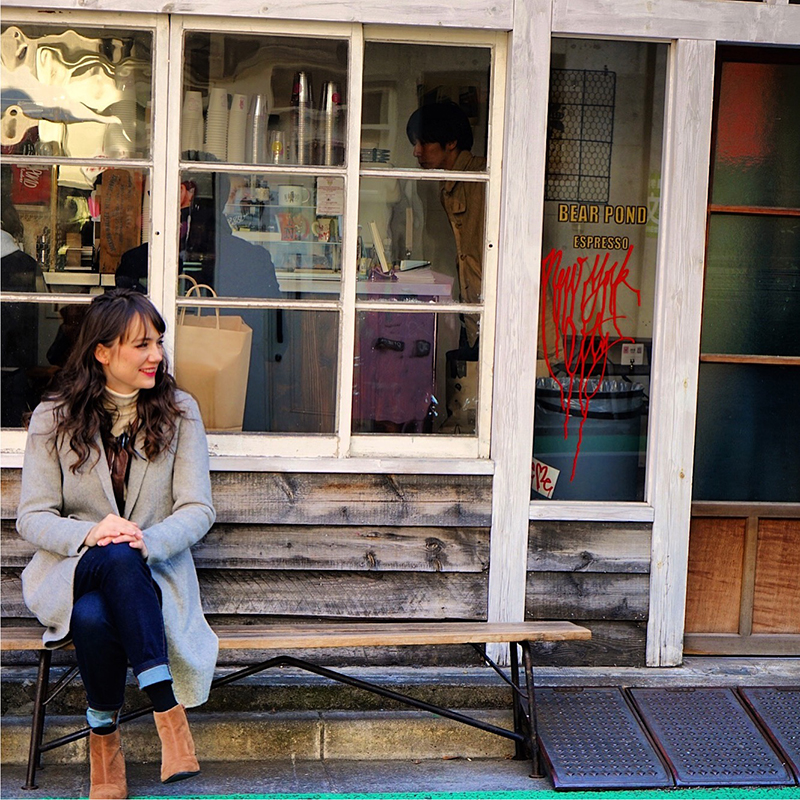
Ohio native Becky Gillespe lives in the Shimokitazawa neighborhood of Tokyo that’s filled with cozy cafes like Bear Pond Expresso.
Name: Becky Gillespie
Age: 34
Hometown: Tokyo, Japan (originally from Cincinnati, Ohio)
Country count: 45 Countries (46 by next month)
Website: www.TokyoBecky.com
Instagram: @TokyoBecky
1. How did you start traveling?
I took out college loans in order to take a two-month study abroad program to Western Europe just before my last year of university. The trip was a special independent style trip where we took classes in hotel conference rooms as a group of 120 students from Monday–Wednesday. We could travel anywhere on our own from Wednesday afternoon to Sunday night, when we had to be in the next European city for class. I’ll never forget when we all traveled together as a big group from London to Paris on the Eurostar, and the minute we arrived in Paris, our professors said, “See you in four days!” and walked away. With two months of this kind of travel, I was able to see 12 countries, and I’ve never regretted taking out the loans to do this trip because it changed my mindset about travel forever.
2. How did you end up in Japan?
In the last three months before college graduation, I was doing interviews for jobs as a Finance major. I hadn’t been able to find anything solid, and I think in the back of my mind I wasn’t enthused about settling down to work and not be able to travel. When I noticed a sign at a career fair on my college campus advertising “A Year of Adventure Abroad” about teaching English in Japan, I decided to get some more information. I had really enjoyed the film “Lost in Translation” and had also heard that Japan was very safe for female solo travelers. I decided to give it a try, thinking that I could go back [to the U.S.] anytime if it didn’t work out and stay with my family. So, I went not speaking a word of Japanese, not knowing anyone, knowing only that they would be picking me up at the airport and that I would be living in company housing with other fellow teachers. I landed in Tokyo four months after that career fair, and it’s been my home ever since [12 years later].
One thing about Tokyo is that if you are a native English speaker (and I hate to say this, but even more so if you look like Japanese people “expect” a native English speaker to look), there are never ending opportunities for you to make money speaking English. I have worked at conversation schools, taught in elementary, junior high, and high schools, and taught business professionals (what I currently do). I also did Japanese and U.S. taxes for a global accounting firm, voice over recording work, editing, translation, you name it. There is even a company here where you can sing over the phone to children in English and get paid.
Another amazing thing about Japan is that there is a huge private under-the-table market for teaching English privately. Many people meet in cafes and teach students for one hour, and the going rate is about $30 USD per hour. If you want to find students and set up your own lessons, the sky is the limit. I once had an opportunity to go to a private home and teach three children for one hour. The mother then invited the children’s friends and for a while, I was teaching seven children in her home and was making $140 USD an hour. There is really no limit if you do the work and make the connections here to put it all together.
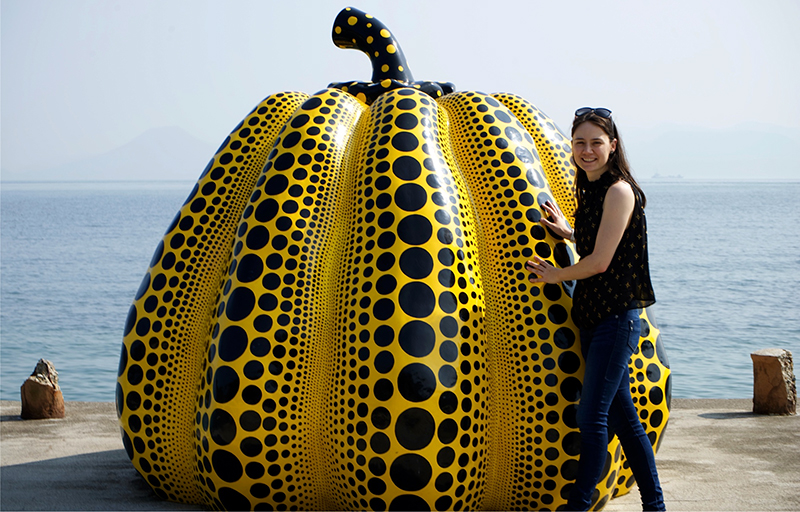
Naoshima is an island known for sculptures and art museums located an hour away from Okayama.
3. What advice would you have for someone wanting to teach English in Japan?
I would actually recommend coming over with one of the big conversation schools at the very beginning because it is a great way to get paid while deciding if teaching is what you’d like to do over here. While you’re working at the big company, I’d recommend looking around and making connections, going to meetup.com groups and start asking around to learn about other opportunities. There are essentially Japanese lessons that are given at every local community center by Japanese volunteers to help people get adjusted to life in Japan. These can be a good place to make Japanese friends and be introduced to the culture first hand at the very beginning. Getting involved in a regular activity here can also be very good whether it’s the judo that you’ve always been interested in or taking Japanese calligraphy, flower arranging, etc. This will also help you make more connections. In the last five years, it’s gotten significantly easier to live here with all the apps and websites that have been started to get more involved in Tokyo.
[For more about ways to work in Japan, check out Becky’s posts on how to move to Japan which include informations on visa types and 10 things you must know before moving to Japan on her blog, TokyoBecky.com.]
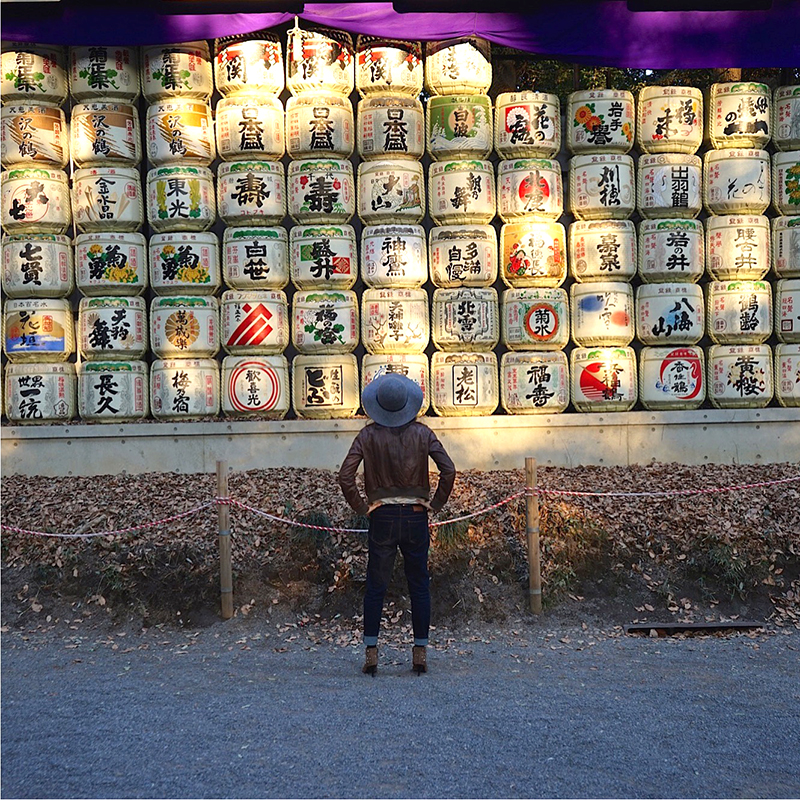
Becky stands outside the famous Meiji Shrine in Tokyo. She recently received permanent residency status in Japan.
4. Share some tips for traveling on a budget in Japan.
My first huge tip is to buy a Japan Rail Pass BEFORE you come to Japan (you activate it once you come to Japan). This will save you an unbelievable amount of money traveling around on the bullet trains here. As a resident here, I am not allowed to buy it, but one return trip Kyoto from Tokyo for me as a resident is more expensive than seven days of unlimited travel on this pass, just to give you an idea. I would also advise bringing a water bottle because water is about $1.40-1.60 from the vending machines here, and the [tap] water is totally safe to drink. There are drinking fountains at pubic restrooms, parks, and at most train stations. Save when you can. Take the trains instead of the taxis. That’s a huge tip because Tokyo seems to have the most expensive taxis in the world. Make sure that you don’t miss the last train home every night (around 11:30pm-midnight) because then you must pay for taxis, and it gets expensive. To keep things cheap for the food budget, check out ramen shops and noodle shop chains to not only try Japanese food but also keep your meal at under $10. Many of these shops also sell a good-sized meal for around $6. I also recommend the 100 yen or $1 stores here which sell absolutely everything except anything you’d want to wear in public. There is also no tipping in Japan for anything so you will definitely save there. I also strongly encourage looking for reasonable Airbnb places in Tokyo. Hotels are generally very expensive, but Airbnb can be much more reasonable.
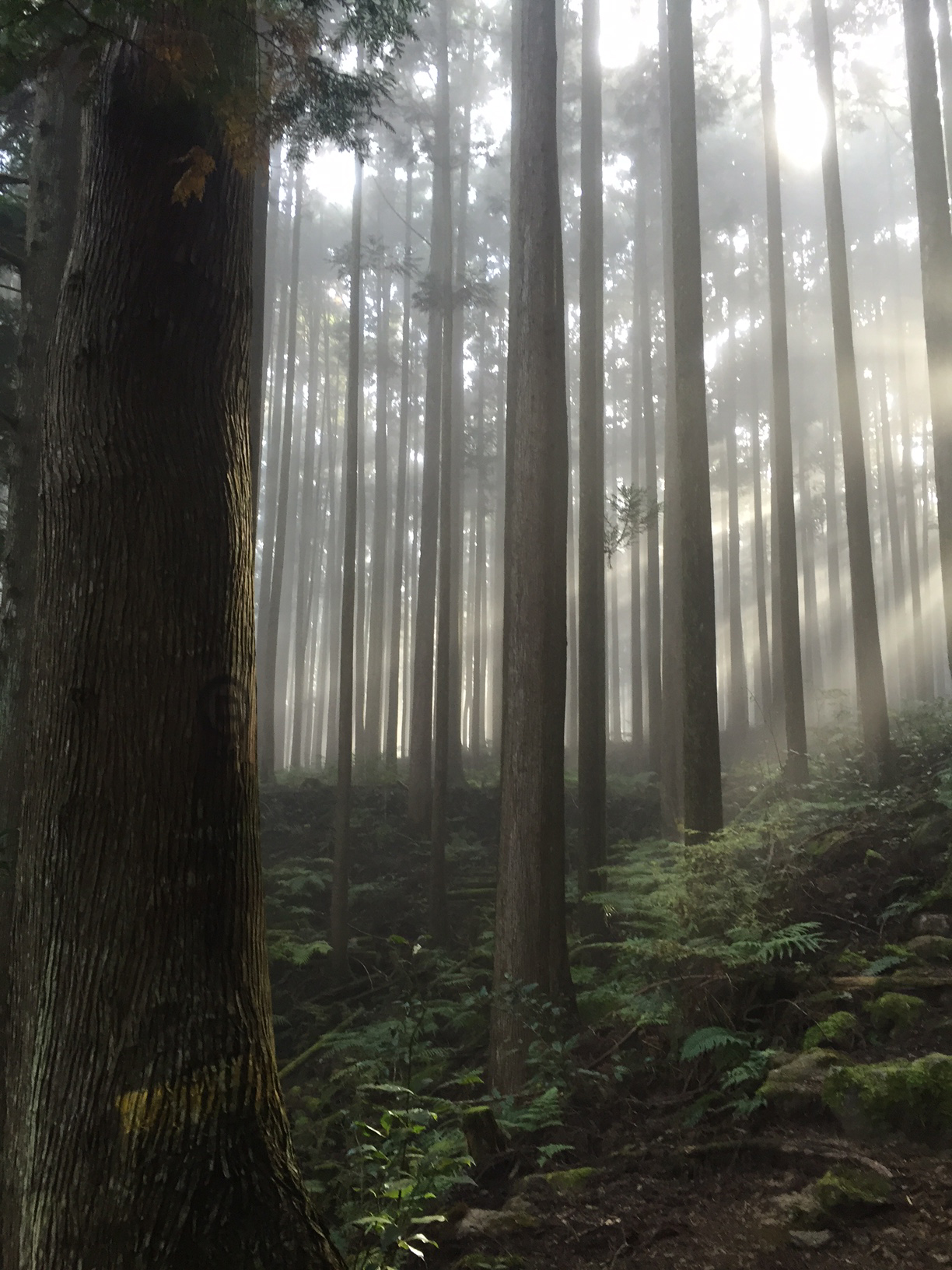
Becky recommends the remote Kumano Kodo pilgrimage hike in Wakayama, Japan as a good way to escape the crowds.
5. What are your three favorite off-the-beaten path places to visit in Japan?
I love this question because Japan is a treasure trove of off-the-beaten path places. Unfortunately, the three places that I’m going to tell you about are not easy to get to and will take a bit of time out of your travel budget to get to, but they are worth it! I love the Kumano Kodo pilgrimage path hike in Wakayama, Japan. I just did this over Thanksgiving and saw a total of seven people on the four-day trek while on the hiking trail itself. It is full of history, beautiful shrines, amazing hot springs, and friendly people. I would love to visit again. Another wonderful little trip that should be done together is Okayama with a side visit to the town of Kurashiki (a little Kyoto like town). Okayama has a castle and one of Japan’s top three gardens and one hour away is an island full of art sculptures and art museums called Naoshima. It is such an interesting place to visit if you love art. Finally, I have to mention the island of Yakushima, which is a ferry ride from the city of Kagoshima in Kyushu, Japan. This is an island covered in ancient cedar trees and is a wonderful place to hike. There are also some areas with beaches in the summer. I loved hiking there.
6. What was your greatest struggle living abroad and how did you overcome it?
My greatest struggle was the language barrier when it came to dealing with more difficult things like renting an apartment or explaining medical issues. I have continued to learn the language step by step and have also leaned on my friends for support to overcome this. Be open with your problems that you’re having and you’d be surprised who is willing to help.
7. What advice would you have for aspiring travelers?
I have found that the friends that you make here are great resources and support when you need to get over things like this. Find someone who has done it before you through your network, and they will point you in the right direction. Curiosity is going to be your greatest friend here because it will keep you exploring new places and meeting new people who will be able to help you get where you need to go. When I’m on the fence about going to a new place, I always book the plane ticket and then do what I need to prepare for the commitment that I’ve made from there. In my head, it’s always expensive or frustrating to change my flight plans from there, so I stay committed to those dates and make it happen if I can. If you’re afraid, just have the contact details of the hotel where you’re staying with you, and someone will be able to help. The first step is always the hardest, but then, you will learn as you go.
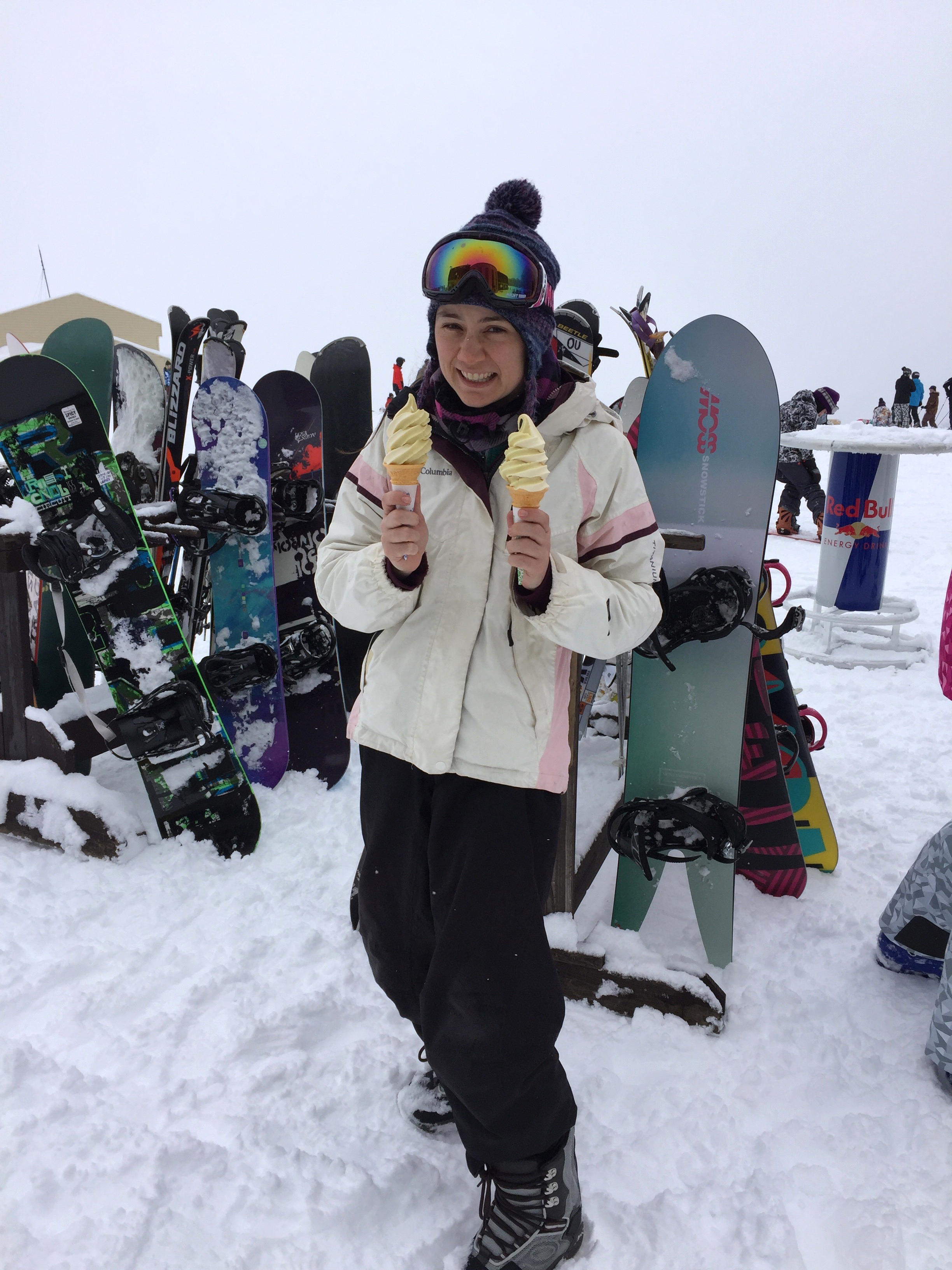
Becky heads to Nagano to go snowboarding once or twice a year. The city was home to the 1998 Winter Olympics.
8. What is the biggest myth about traveling solo or living in Japan?
That it is dangerous (the solo female travel part), crazy expensive and you will just have to work all the time. None of this is true (although the work part can sometimes feel true). I have found a way to make plenty of time for taking the trips that I need to and you can make it happen as well. I have found living in Tokyo to be cheaper than living in Cincinnati because I never need a car here, and I have been able to keep rent at less than $800 and teach private students for extra cash when I want to save up for something.
9. Name three things you always pack for a trip.
- My running shoes because they double as walking/hiking shoes
- a small purse that I can put over my shoulder and hold close to me for going out at night (this helps me carry things during the day but is also nice enough for going in to nicer restaurants at night instead of bringing in my backpack)
- my Kindle – I have to read on trips and it can be very hard to find specialized books while traveling
10. What is your next adventure?
After a short weekend snowboarding trip to see the “Snow Monsters” in Zao, Yamagata, Japan, I’ll be heading on a solo trip to Myanmar for the first time. I’m hoping to finally check riding in a hot-air balloon off of my bucket list!
For more information about traveling or living in Japan, check out my Where to Go in Japan post and visit Becky’s blog, TokyoBecky.com.


